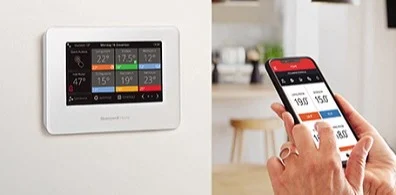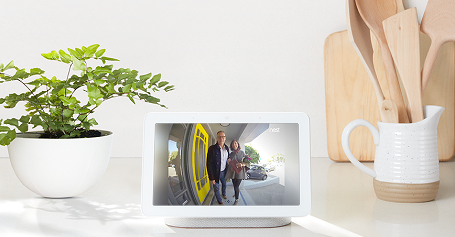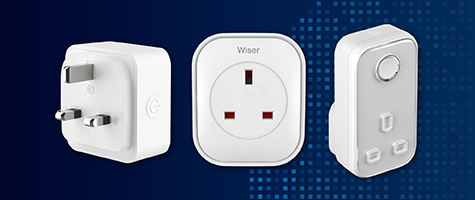How to set up a Smart Home
From Graduate to Grandma, the idea of having a smarter, more practical, and more efficient home appeals to all.
One in four adults already own a smart speaker in their homes, and that number is quickly growing as the technology advances. Further technology is finding its way into our homes too, with 23% of British households owning two or more smart devices.
So what are the benefits of a smart home, and what’s the best way to go about integrating smart home technology into your home? Let’s take a look.
How smart homes make life better
Picture the scene - you’ve just got home from a long day at work. Instead of fumbling around for your keys, you unlock the front door with a simple tap of your phone. Once inside, the lights turn themselves on automatically. Your favourite playlist starts playing through the speakers, and the thermostat has pre-set the perfect room temperature ready for your arrival.
It sounds like the stuff of science fiction, and having so much control over your home would have been completely inconceivable to homeowners even 20 years ago. Yet advances in smart home technology have made home automation a reality for millions of homes around the world.
A smart home system works to take the hassle out of your day, and make your home far more efficient in the process.

How smart homes save energy
In short, smart homes use ever-evolving software and internet connectivity to help you save both energy and heat, making your home cheaper to live in and reducing household emissions.
There’s an elegance in it, too. Don’t expect to be sitting on the sofa shivering with three jumpers on because your smart thermostat has decided now is the time to save energy. Fortunately, smart home technology won’t forcibly restrict your energy usage.
Instead, smart home devices are designed to make the most out of your available energy, and help you cut down on the energy that goes unused or wasted. For example, smart thermostats can be programmed to only heat the rooms you’re actually using.
Other devices, such as smart light bulbs, use less energy to begin with. The average smart bulb uses around five times less energy than an equivalent halogen bulb. These savings add up - and can help shave hundreds off your energy bills each year.
Now you know why smart homes are exploding in popularity, you may be wondering how the tech is installed and incorporated. “Will it require me to rewire the house? Do I need to get the builders in?”
…Fortunately, no. By simply plugging in a few devices, you’ll have a smart home up and running in no time. Here’s our step-by-step methodology when it comes to integrating smart home technology into your own home.
Step 1: Controlling your home through smart hubs and virtual assistants
When it comes to setting up a smart home, the first thing you’ll need to decide on is the virtual assistant you’re going to use to control your other smart devices.
The virtual assistant you choose will be the beating heart of your smart home. It will act as a central hub to help you control your connected devices.
Smart hubs and smart speakers, such as the Google Nest Hub or Amazon’s Alexa, are useful tools in themselves. Alone, they can function as intelligent calendars, radios, cookbooks, route planners, and much more - thanks to their powerful inbuilt speakers, voice control, and internet connectivity.
They’re commonly used as a ‘base device’ for any smart home. Simply connect them to your WiFi, and they’ll be ready to pair with other smart devices - such as smart lighting, smart doorbells, or smart thermostats.
You likely already have a virtual assistant in your pocket or on your desk as we speak. Android devices have Google assistant, and Apple devices have Siri. Your smartphone can be a part of your smart home system, giving you total control of your house - even when you’re not in it.
No matter which brand or device you use to control your smart home, a virtual assistant will provide a quick and easy way to issue voice commands to control your house, no matter where you are or what you’re doing.
Step 2: Set the mood with smart lighting
Smart bulbs are a great addition to any smart home. They’re relatively cheap to buy, cheap to run, and incredibly easy to set up.
Smart lighting allows you to easily configure lighting colour, colour temperature, and light brightness from your smart hub or smartphone. This means you’ll always have the perfect ambiance in your home, no matter whether you’re watching a film, reading a book, or simply relaxing after a long day.
For more help and guidance on choosing the perfect smart lighting for your home, click here to view our in-depth smart lighting buying guideart-lighting-a-comprehensive-guide.

Step 3: Stay secure with smart home security
Smart doorbells, smart security cameras, and smart sensors have all exploded in popularity in recent years, and are arguably the most significant advancement in home security since… well, the locking front door.
Smart doorbells, such as the Ring video doorbell and the Google Nest Hello Doorbell, allow users to see and communicate with visitors, no matter where they are. Along with smart security cameras, they can act as a powerful security deterrent, and can be paired with smart lighting to make a front door light turn on once motion is detected.
Click here to view our full range of smart home security devices to add an extra layer of convenience and protection to your home.
Step 4: Automate your heating and save money with a smart thermostat
Unsurprisingly, smart thermostats are one of our bestselling smart home products. The benefits they provide are innumerable, and they have the potential to save users hundreds on their heating bill annually.
Certain smart thermostats, such as the Google Nest Thermostat Pro, learn your preferences and can reduce energy bills by around 16% - without sacrificing a warm, cosy home.
Click here to view our range of smart thermostats, designed to make your heating system more efficient and save you money in the long run.
Step 5: Use smart plugs to integrate your old appliances
Transitioning to a convenient, practical, and connected smart home doesn’t have to cost a fortune. With smart plugs, creating and designing a smart home can be done with minimal fuss - and minimal cost.
Regular non-smart devices, such as fans, lamps, coffee machines, air fryers, and anything else with a plug - can be controlled with your phone or smart hub thanks to smart plugs.
Simply plug a smart plug into the wall outlet, connect it to your phone or hub, and plug the non-smart device in. Simple!

Some smart plugs go a step further, showing you exactly how much energy each device uses - encouraging thoughtful consumption and saving you money.
Home automation is no longer a far-reaching fantasy, reserved only for works of science fiction. It’s here now, and it’s a lot easier to integrate into your home than you might expect.
Keep in mind that you won’t need to invest in everything at once (unless you’re planning a renovation and a range of smart home tech can be integrated into your design plans).
But when you are ready for smart devices that can save you time, money, and effort day in day out - City Plumbing stocks the very latest and greatest in smart home technology.
Take a look at the full range by clicking here. Need personalised guidance when it comes to setting up your smart home? Click here to get in touch with our experts.



